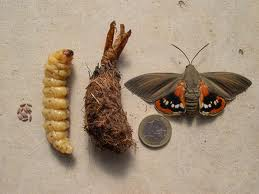As promised Sue's article on the protection of terracotta pots.
Quote:
HOW TO PROTECT TERRACOTTA POTS FROM FROST
Your terracotta pots are not frost-proof? Your terracotta pots were sold to you as frost-proof and turn out to be susceptible to frost?
Small pots can, of course, be easily moved into the shelter of a covered terrace or a light-filled garage or a greenhouse. But what about those gigantic pots which, once filled with earth, are destined to remain rooted forever to their allotted spot?
Here’s how to protect your pots which can be as tender and in need of TLC as your frost-sensitive plants.
My remedy is to cover the outside of the pot with a loose tube of double-layer bubble-wrap with straw inserted between the bubble-wrap and pot plus an outer layer of bruyere to hide the unsightly plastic.
Materials:
bubble-wrap (enough to go around the pot and overlap to fasten with stitching)
straw (enough to stuff between bubble-wrap and pot)
bruyere (enough to go around the pot+bubble-wrap & overlap to fasten with
stitching)
scissors
secateurs (to cut bruyere to size)
scissors
secateurs (to cut bruyere to size)
wire-cutters (to cut bruyere wire)
needle with wide “eye”
thick thread (used double) or fine string (to sew bubble-wrap and bruyere)
thick thread (used double) or fine string (to sew bubble-wrap and bruyere)
fat string/cord (to tie bubble-wrap around pot)
1. Cut two lengths of bubble-wrap 30cm higher than the pot and long enough to go around the pot to overlap for stitching and to allow a fist of straw to be inserted. Bubble-wrap is obtainable in 10m rolls from a removal company (Brusseau, 33 ave de l'Europe, ZAC St. Hermentaire, Draguignan) or DIY stores such as Leroy Merlin, Bricoman, Castorama (telephone first to check availability of “papier bulles”); straw is found in the co-operative agricoles.
2. With double thickness of thread or single length of fine string, tack the two layers of bubble-wrap together and join the two sides together.
3. Slip over the pot and tuck up bottom 15 cm (this prevents straw touching damp ground)
4. Stuff straw between bubble-wrap and pot and tie cord around top of pot and fold top 15cm of b-wrap over edge of pot (to prevent water penetration to straw)
5. Cut bruyere with secateurs to exact height of pot to cover b-wrap and long enough to overlap for seam allowance plus extra 2.5cm. Remove 2.5cm of bruyere and twist each metal.
6. Using fine string and large stitches, over-sew/hem the edges together.
Unquote















